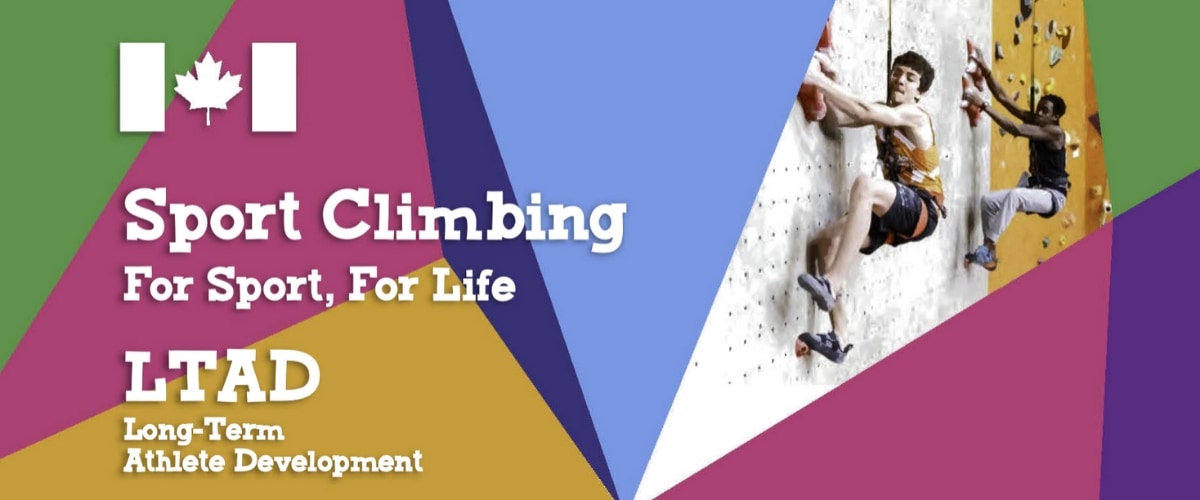Long Term Athlete Development: From Good to Great in Climbing

With the Olympics now hosting climbing as a competitive sport, many young climbers have far greater dreams than those who came before them. Now youth can dream of podiums, medals, and national flags. Social media is bringing the best of the best front and center on our Instagram and Facebook feeds, influencing an entire generation of young climbers to dream of competing among the elite.
Growth in participation, as well as the elevated aspirations of our young athletes, is an exciting opportunity for the sport of climbing. However, it is important to think long-term when creating training plans and programming for young athletes; that’s where Long Term Athlete Development comes in.
THE HISTORY OF LONG TERM ATHLETE DEVELOPMENT
To understand where the LTAD program came from, you have to go back to the 1952-1988 era of Russian dominance at the Olympics. The repeated defeats on the international stage forced countries like Canada, Britain, and the US to look at what Russia was doing to develop their winners.
What they discovered was that Russia had created academic schools which also focused on developing athletes. Russia was simply using a concentrated method of developing the skills, strength, and agility of athletes from a young age.
In 1995, Istvan Balyi, a sports scientist working with the National Coaching Institute in British Columbia, Canada, packaged the Long Term Athlete Development program to provide a framework for improving sports systems in Canada.
The initial LTAD program described four stages of development, however with more research and review, and the development in the understanding of athletes, the model now describes eight stages of developing athletes.
Each stage is geared toward development physically, mentally, and in skill.
- Active Start: Birth to age 6
- FUNdamentals: Age 6 to 8 (F) or 9 (M)
- Learn to Train: Age 9 to 11 (F) or 12 (M)
- Train to Train: Age 11-15 (F) or 12-16 (M)
- Learn to Compete: Age 15-17 (F) or 16-18 (M)
- Train to Compete (Sport Climbing: Learn to Win): Age 16 and older
- Train to Win (Sport Climbing: Winning for a Living): Age 18 and older
- Active for Life: Any age after the growth spurt.
Like most sports organizations who now recognize this LTAD model as a foundation for athlete development, Climbing Escalade Canada has rewritten the LTAD for Sport Climbing.
This comprehensive document provides athletes, parents, coaches, and climbing organizations a great opportunity to identify the stage of an athlete’s development, to structure and focus training development, and to bring a higher level of safety and professionalism to our sport.
It is important to note that this is not a one-size-fits-all model. Take Stage 3 as an example (the full chart is on page 13 of the CEC’s LTAD document).
You’ll notice that not all 10-year-olds will naturally have the FUNdamentals, or a solid foundation of movement skills, and those athletes may need additional support to catch them up in those areas. On the other hand, some 10 year olds may actually already be exceeding the Learn to Train level in strength and agility.
The CEC’s LTAD document breaks down each stage in full detail, which provides a guide to the appropriate strength and agility training, technical training, and mental and emotional development of the athlete. Use this guide to help you understand how to support your athletes at their various stages of development.
As our sport continues to grow and develop it will become more and more essential that coaches working with prospective competitors can provide a sustainable and healthy approach to athlete development. Stay tuned for my next post, where we will take a deeper look at the goal of the Long Term Athlete Development model.
References:
- Practical Application for Long-Term Athletic Development, Larry Meadors PhD
- Sport Climbing LTAD Document, Climbing Escalade Canada
About The Author
 Heather Reynolds is a licensed kinesiologist, High Five Trainer (Sport, PCHD), CEC Climbing Coach, and CWA Climbing Wall Instructor Certification Provider Trainer. She blends her knowledge of movement, physiology, and education to develop a multitude of successful climbing programs designed to support and engage youth. Having worked with youth for over 30 years as a recreation instructor, leader and educator, Heather supports the values and expertise available in the High Five Program, bringing quality assurance to youth-based sport and recreation programming.
Heather Reynolds is a licensed kinesiologist, High Five Trainer (Sport, PCHD), CEC Climbing Coach, and CWA Climbing Wall Instructor Certification Provider Trainer. She blends her knowledge of movement, physiology, and education to develop a multitude of successful climbing programs designed to support and engage youth. Having worked with youth for over 30 years as a recreation instructor, leader and educator, Heather supports the values and expertise available in the High Five Program, bringing quality assurance to youth-based sport and recreation programming.
